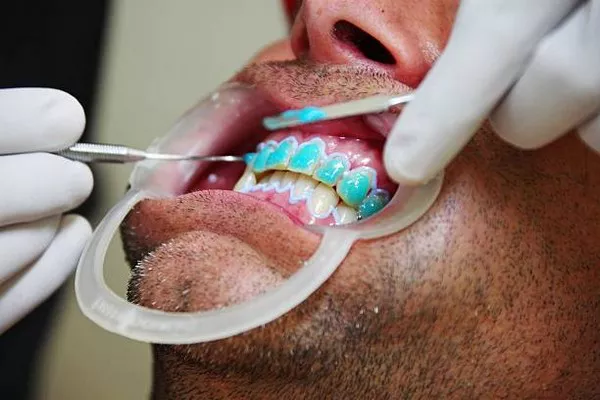Root canal treatment, also known as endodontic therapy, is a dental procedure aimed at saving a severely infected or decayed tooth. While the thought of undergoing a root canal may evoke concerns about cost, understanding the factors influencing the expenses involved can provide clarity and help patients make informed decisions about their dental care. In this comprehensive guide, we delve into the various aspects of root filling costs, including average cost ranges, influencing factors, breakdown of expenses, insurance coverage, alternative payment options, additional costs, and the value of saving a tooth versus extraction.
Average Cost Range
The cost of a root canal treatment can vary significantly depending on several factors, including the severity of the infection, the location of the dental practice, the dentist’s experience, and the type of tooth being treated. On average, patients can expect to pay between $500 to $1,500 for a root canal procedure. However, this range can fluctuate based on individual circumstances.
To provide a more specific breakdown, incisors and canines, which are front teeth, typically cost between $500 to $1,000 for a root canal. Premolars, situated between the front teeth and molars, may fall within a similar price range. Molars, the larger teeth located at the back of the mouth, are generally more complex to treat and may range from $800 to $1,500 for a root canal procedure.
It’s important to note that these figures serve as estimates, and actual costs may vary depending on various factors unique to each case.
Factors Influencing Cost
Several factors can influence the cost of a root canal treatment:
- Location of the Dental Practice: Dental care costs can vary significantly based on geographic location. Urban areas or regions with a higher cost of living may have higher dental fees compared to rural areas.
- Dentist’s Experience and Expertise: Dentists with extensive experience and specialized training may charge higher fees for their services. However, their expertise often ensures a higher success rate and better outcomes for patients.
- Complexity of the Procedure: The complexity of the root canal procedure itself can impact the cost. Teeth with multiple roots or curved root canals may require more time and effort to treat, potentially increasing the overall cost of the procedure.
- Type of Tooth Being Treated: The location and type of tooth undergoing root canal therapy can affect the cost. Molars, being larger and more difficult to access, typically incur higher treatment costs compared to front teeth.
Considering these factors can help patients understand why the cost of root canal treatment may vary from one dental practice to another.
Cost Breakdown
A typical root canal treatment involves several steps, each contributing to the overall cost:
- Initial Consultation: During the initial consultation, the dentist examines the affected tooth, evaluates the extent of the infection or decay, and discusses treatment options. The cost of the consultation may vary depending on the dental practice.
- X-rays: X-rays are essential for diagnosing the condition of the tooth and planning the root canal procedure. The cost of X-rays may be included in the overall treatment cost or billed separately.
- Root Canal Procedure: The core of the expense lies in the root canal procedure itself, where the infected or damaged pulp inside the tooth is removed, and the root canals are cleaned, disinfected, and sealed to prevent further infection.
- BAfter the root canal procedure, patients may require follow-up visits to ensure proper healing and assess the success of the treatment. The cost of these visits may be included in the overall treatment package or billed separately.
- Additional Treatments: In some cases, a dental crown may be necessary to protect the tooth following a root canal. The cost of the crown is typically separate from the root canal treatment and can vary depending on the material used and the complexity of the restoration.
By understanding the breakdown of costs involved in a root canal treatment, patients can better anticipate their financial obligations and plan accordingly.
Insurance and Coverage
Dental insurance may cover a portion of the cost of root canal treatment, depending on the terms of the policy. It’s essential for patients to review their insurance coverage and understand the extent of benefits for endodontic procedures. While some plans may cover a significant portion of the cost, others may require patients to pay a higher deductible or copayment.
Patients should also be aware of any limitations or exclusions in their insurance policies, such as waiting periods or restrictions on certain treatment types. Consulting with the insurance provider or the dental office’s administrative staff can provide clarity on coverage details and help patients maximize their benefits.
Alternative Payment Options
For patients without dental insurance or those seeking additional financial assistance, several alternative payment options may be available:
- Payment Plans: Many dental practices offer flexible payment plans that allow patients to spread the cost of treatment over time. These plans may involve monthly installments or customized payment schedules based on the patient’s budget.
- Dental Discount Programs: Some dental offices participate in discount programs that offer reduced rates on various dental services, including root canal treatment. These programs may require an annual membership fee but can provide significant savings for uninsured patients.
- Financing Options: Third-party financing companies specialize in healthcare financing and offer payment plans specifically designed for dental treatments. Patients can apply for financing to cover the cost of root canal treatment and repay the loan over time with fixed monthly payments.
Exploring these alternative payment options can make root canal treatment more accessible and affordable for patients with budgetary constraints.
Additional Costs
In addition to the cost of the root canal procedure itself, patients should be aware of potential additional costs that may arise:
- Dental Crown: Following a root canal, a dental crown is often recommended to protect the treated tooth and restore its strength and functionality. The cost of a dental crown can vary depending on factors such as the material used (e.g., porcelain, metal, or ceramic) and the complexity of the restoration.
- Retreatment: In some cases, a root canal treatment may fail to resolve the infection or complications may arise later on, necessitating retreatment. The cost of retreatment can add to the overall expenses of managing the tooth’s health.
Being prepared for these potential additional costs can help patients make informed decisions about their treatment options and budget accordingly.
Saving the Tooth vs. Extraction
When faced with a severely infected or damaged tooth, patients may wonder whether it’s worth investing in a root canal treatment or opting for extraction instead. While extraction may seem like a more cost-effective solution upfront, it’s essential to consider the long-term implications and benefits of saving the natural tooth:
- Preservation of Natural Tooth Structure: Root canal treatment preserves the natural tooth structure, preventing the need for extraction and subsequent tooth replacement options such as dental implants or bridges. Preserving the natural tooth can contribute to better oral health and overall well-being.
- Functional Benefits: A tooth that has undergone root canal treatment and restoration with a crown can function similarly to a healthy natural tooth, allowing patients to chew, speak, and smile with confidence.
- Prevention of Adjacent Tooth Problems: Extracting a tooth can lead to various oral health issues, including shifting of adjacent teeth, bite misalignment, and jaw bone deterioration. By saving the natural tooth through root canal treatment, patients can maintain the integrity of their dental arch and avoid these complications.
- Cost-Effectiveness in the Long Run: While the initial cost of a root canal treatment may be higher than extraction, the long-term benefits of preserving the natural tooth can outweigh the short-term savings. Tooth replacement options like dental implants or bridges involve additional costs and may require periodic maintenance over time.
Ultimately, the decision between saving a tooth through root canal treatment or opting for extraction should be made in consultation with a qualified dentist, taking into account the individual’s oral health, treatment goals, and financial considerations.
Conclusion
The cost of a root canal treatment can vary depending on several factors, including the severity of the infection, the location of the dental practice, and the type of tooth being treated. By understanding the average cost range, factors influencing cost, cost breakdown, insurance coverage, alternative payment options, additional costs, and the value of saving the natural tooth, patients can make informed decisions about their dental care and achieve optimal oral health and well-being.
FAQs About Dental Fillings
1.Can you get two fillings at the same time?
Yes, it is possible to receive two fillings during the same dental appointment. If multiple teeth require restoration due to decay or damage, your dentist may recommend addressing them simultaneously to minimize the number of visits and streamline the treatment process. However, the feasibility of getting two fillings at once depends on various factors, including the extent of the dental work needed, the patient’s comfort level, and the dentist’s assessment of the overall oral health condition.
2. How long after 2 fillings can you eat?
After receiving dental fillings, it is essential to allow the filling material to fully set and harden before eating. Typically, patients are advised to wait until the local anesthesia wears off completely before consuming any food or beverages. This usually takes a few hours. However, it’s crucial to follow your dentist’s specific instructions regarding post-treatment care and dietary restrictions. In some cases, your dentist may recommend avoiding hard, sticky, or excessively hot foods for a certain period to ensure the longevity of the fillings and promote optimal healing.
3. How many fillings can a dentist do in an hour?
The number of fillings a dentist can perform in an hour can vary depending on several factors, including the complexity of the fillings, the patient’s cooperation, and the dentist’s efficiency and skill level. In general, a dentist may be able to complete one or two simple fillings within an hour-long appointment. However, if the fillings are more extensive or require additional procedures, such as tooth preparation or anesthesia administration, the time required may be longer. It’s essential for dentists to prioritize patient comfort, quality of care, and thoroughness over speed when performing dental procedures.
4. Can a filling take 10 minutes?
While some minor fillings may be completed relatively quickly, it is uncommon for a filling procedure to take only 10 minutes. The time required for a filling appointment depends on various factors, including the size and location of the cavity, the type of filling material used, and the dentist’s technique. Additionally, the dentist may need to administer local anesthesia, prepare the tooth, remove decayed tissue, and carefully place and shape the filling to ensure a proper fit and seal. Rushing through these steps can compromise the quality of the restoration and increase the risk of complications. Therefore, dentists typically allocate sufficient time for each filling appointment to deliver optimal results and ensure patient satisfaction.































